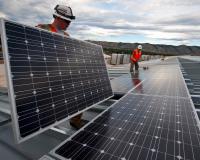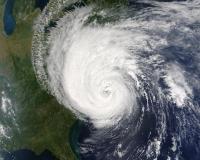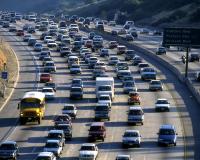
Vibrant Environment
Climate Change And Sustainability
All | Biodiversity | Climate Change and Sustainability | Environmental Justice | Governance and Rule of Law | Land Use and Natural Resources | Oceans and Coasts | Pollution Control

As we get ready to ring in the New Year, the editors of Vibrant Environment thought it might be nice to take a look back at some of the work ELI did in 2018.
While environmental quality over the past 50 years has no doubt improved, the pace of change is leaving in the dust the linear environmental strategies of the past. We’re living in a fascinating moment in time when divergent forces—private environmental governance, law, technologies, and communities—are coming together, allowing us to harness their combined power in a new environmental paradigm. In A New Environmentalism: The Need for a Total Strategy for Environmental Protection, ELI offers a new way to think about the environmental strategies of tomorrow. The article was published in the September issue of ELR’s News & Analysis and was featured at the 2018 ELI-Miriam Hamilton Keare Policy Forum. We look forward to continuing the conversation in 2019.

Close to 150 activists were arrested during peaceful protests organized by the youth-led organization Sunrise Movement on Monday, December 10. During and after the direct action, in which thousands of activists visited democratic offices demanding support for incoming Rep. Alexandria Ocasio-Cortez’s (D-N.Y.) proposal for a Select Committee on a Green New Deal, 10 additional democratic representatives pledged their support for the proposal. The resolution would create a committee that would have the specific mandate to draft a Green New Deal—the goals of which include 100% renewable energy, upgrading infrastructure, and green technology deployment — that would be ready by 2020. For “green” democrats, this is a difficult proposal to deny, especially given the depth of research on scaling green strategies, as exemplified by ELI Press’ latest release, Legal Pathways to Deep Decarbonization in the United States: Summary and Key Recommendations.

Well before the world’s atmospheric level of carbon dioxide reached 400 ppm, residents and scientists in the Arctic were documenting dramatic changes taking place in the Arctic environment, which is warming at twice the rate as lower latitudes. The Arctic has seen loss and deterioration of summer and fall sea ice, melting of permafrost, migration of shrubby plants into the region, fires, and changes in the phenology of birds, animals, insects, and plants such that their seasonal cycles have become out of sync.

Solar panels, wildlife observatories, and rain barrels, oh my! How can the Environmental Law Institute’s Blight Revitalization Initiative for Green, Healthy Towns (BRIGHT) Area-Wide Planning Guide help your community implement green infrastructure? The BRIGHT guide compiles research on brownfields revitalization to empower communities and municipalities with some helpful tools to turn a brownfield into an economic opportunity. BRIGHT recognizes the economic and community-building potential that green infrastructure development can have for a community.

In 2017, almost eight percent of the American population was affected by natural disasters. Hurricanes Harvey, Irma, and Maria swept through Florida, Georgia, Texas, Puerto Rico, and the U.S. Virgin Islands, leading to billions of dollars of federal disaster assistance. The 2018 hurricane season was another year of devastating destruction, most recently seen in the aftermath of Hurricanes Florence and Michael in the Southeast, severely affecting the citizens of Alabama, Florida, Georgia, North Carolina, South Carolina, and Virginia. With climate change likely to amplify the impacts of hurricanes, hurricane season will continue to strain communities, infrastructure, and federal disaster programs into the future.

Extreme weather events are becoming regular headlines across the world. In 2018 we have seen many countries report record-breaking high temperatures, catastrophic storms that have caused millions of dollars’ worth of damage, and/or widespread flooding that has displaced hundreds of thousands of people. Three years ago, Parties to the United Nations Convention of Climate Change gathered in Paris to negotiate action to combat climate change and adapt to its effects. This culminated in the adoption of the Paris Agreement, which has been widely praised for its collaborative approach to tackling climate change whereby the commitments of individual countries will add up to a significant global response.

“It’s all happening,” declared a June 2018 article about offshore wind development in the United States. Indeed, the National Renewable Energy Laboratory has identified a trend toward a viable U.S. offshore wind industry that is gaining momentum. Despite this trend, it has been 17 years since the first offshore wind project was proposed, and the 30-megawatt (MW) Block Island Wind Farm is still the only operating project. Has the time finally arrived for this industry?

Exactly 69 hours, 8 minutes, and 16 seconds after launch, the crew of Apollo 8 burned the spacecraft’s retro rockets while behind the far side of the Moon and out of contact with the Earth. That daring maneuver caused the capsule to enter lunar orbit. The craft circled the Moon three times. After the fourth pass behind the satellite, the three astronauts looked through their tiny glass port and became the first humans to witness an Earthrise.

The United States’ decision to withdraw from the Paris Agreement was a shock to environmentalists and the international community. In response, individual U.S. states took it upon themselves to pledge their commitment to the Paris Agreement without federal support. However, some scholars observed that state involvement in the Paris Agreement may be unconstitutional, a potential violation of the Supremacy Clause, Treaty Clause, and Compact Clause.
In An American (State) in Paris: The Constitutionality of U.S. States’ Commitments to the Paris Agreement, the winner of ELI’s 2017-2018 Henry L. Diamond Constitutional Environmental Law Writing Competition, Kristen McCarthy argues that states’ involvement does not violate the U.S. Constitution. Moreover, she writes, it also may set a precedent for state involvement in future environmental international agreements.

California is often considered a leader in environmental issues and has made strides to become a more environmentally conscious state. Through state and local policies, the state has banned certain plastic products, such as bags and straws, and in 2011 it implemented a Low Carbon Fuel Standard (LCFS) program to curb greenhouse gas pollution. The California Air Resources Board (CARB) implemented this cap-and-trade program to ensure that automakers gradually increase gas mileage on their vehicles and reduce carbon intensity 10 percent by 2020. The state has even sought to extend the LCFS program, with a new goal of 20 percent reduction by 2030. These standards are stricter than the nationwide fuel standards, and while the initiative has received some legal pushback from the agricultural and ethanol industries, even companies in the transportation sector have become accustomed to California’s standards.
California has enjoyed the ability to tackle its own carbon pollution for several years. Now, however, their fuel standards are in danger.